Yin Yoga: Kidney Meridian Poses
Kidney Meridian Poses
We continue on the journey of discovering our 12 body meridians.
Let’s move on to the other half of the meridians by continuing with our next Yin meridian, the kidney. The Kidney “controls the growth and development of bones and nourishes the marrow, which is the body’s source of red and white blood cells. A weak kidney is therefore a prime cause of anemia and immune deficiency.” (Source)
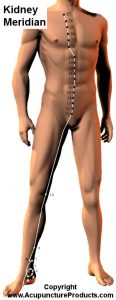
The kidney meridian starts from the inferior aspect of the small toe, near the end of the bladder channel. Going through the middle of the sole and the arch of the foot, it circles behind the inner ankle. It then travels up and along the innermost side of the lower leg and thigh, until it enters the body near the base of the backbone. Once it has connected with the kidney, it comes out at the pubic bone. Over the abdomen, it runs externally upwards until it reaches the upper part of the chest. There is a second branch emerging from the kidney and moves internally upwards, passing through the liver, diaphragm, lungs and throat. And finally terminating at the root of the tongue. A third smaller branch steams out from the lung to connect with the heart and the pericardium.
Why is it important for you?
The kidney is responsible for purifying unwanted metabolites from the blood. Then pushes it out to the bladder to eliminate them through the urine. Any imbalances in this meridian, can cause poor memory, inability to think clearly and backache. It could also cause intense fear or paranoia.
Besides the kidney meridian poses below, eating salty foods could help balance the meridian as well. Although, always watch your intake and keep a healthy balanced diet. This meridian is associated with the element of water, so it’s good to keep your 8 glasses of water a day, as doctors recommend :-). The color associated with this meridian is black. The best season is Winter, which is great if you like to do winter sports.
Add the following kidney meridian poses to your practice to balance it and keep it balance.
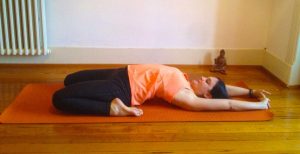 Full Saddle
Full Saddle
Begin by sitting up with both legs in front of you straight, bend the right knee and from the hip, starts to drive your foot back to meet your hips with the help of your hand. Proceed to the left knee. If you have any knee discomfort and the pain if more than normal, please do not do this pose. Otherwise, start having your torso go back slowly, first place your elbows then slowly begin to go back until you have your head and shoulders on the floor. Again, if you feel any discomfort of any sort beyond a normal pain, do not do this pose. Otherwise, stay here for 2 to 3 minutes then switch to the other leg.
After working on both legs, go into Child’s pose and let the practice of this asana sink in.
Cat Tail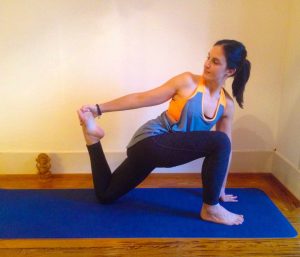
Start in Downward Facing dog, lift up the right leg into Three legged-dog. Then move the right foot all of the way forward between the hands. Follow by dropping the left knee, then bend it driving your foot towards the front. Place the left hand on the floor, then grab with your right hand your left foot. Hold this pose for 2 to 3 minutes then go back to Downward facing dog and try it with the left foot now. This is an intense pose so take your time to get into it. If you feel pain or discomfort on your knee, do not try this pose.
After you’ve done both legs, go into Child’s pose.
Badhakonasa A (Butterfly pose)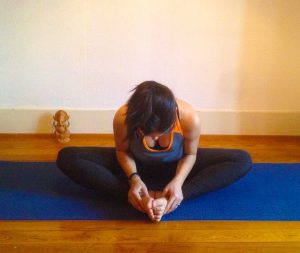
From a seated position, bring the soles of your feet together and then slide them away from you. Allowing your back to round, fold forward, lightly resting your hands on your feet or on the floor in front of you. Your head should hang down toward your heels. It is a good way to nice way to stretch the lower back and the inner thigh. If you have sciatica or back pain, elevate the hips by sitting on a cushion, until the knees are below the hips, or avoid this pose entirely. Do not bend too much forward and keep the neck straight. Inhale and exhale deeply. Stay in here for 2-5 minutes and take the child’s pose for 1-2 minutes.
After time is up finish in Savasana.
These kidney meridian poses are also great for working legs, back, and arms, as well as other meridians that will be covered in future posts. Keep posted, as we will be releasing more soon. (be advise if you have any specific physical conditions or discomfort, do not practice these poses).
Don’t miss any of our upcoming posts, join our newsletter below.
Namaste!
There is one comment
Comments are closed.
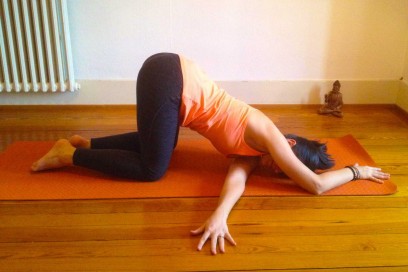
Yin Yoga: Large Intestine Meridian poses
Large Intestine Meridian poses This is a series of posts following our main post, Yin…
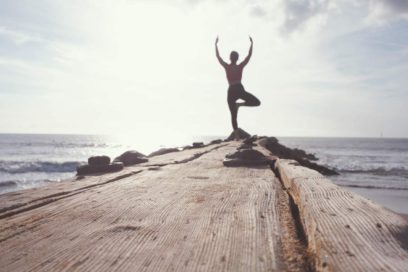
3 great reasons to practice yoga
We speak about yoga as a tool to feel better and will improve our health…

Yin Yoga: Lung Meridian poses
Lung meridian poses This is a series of post following our main post, Yin Yoga,…


[…] have our next yang meridian, which is the complement to the Kidney meridian, the Urinary Bladder. This meridian is the longest and more complex of all. The bladder is […]